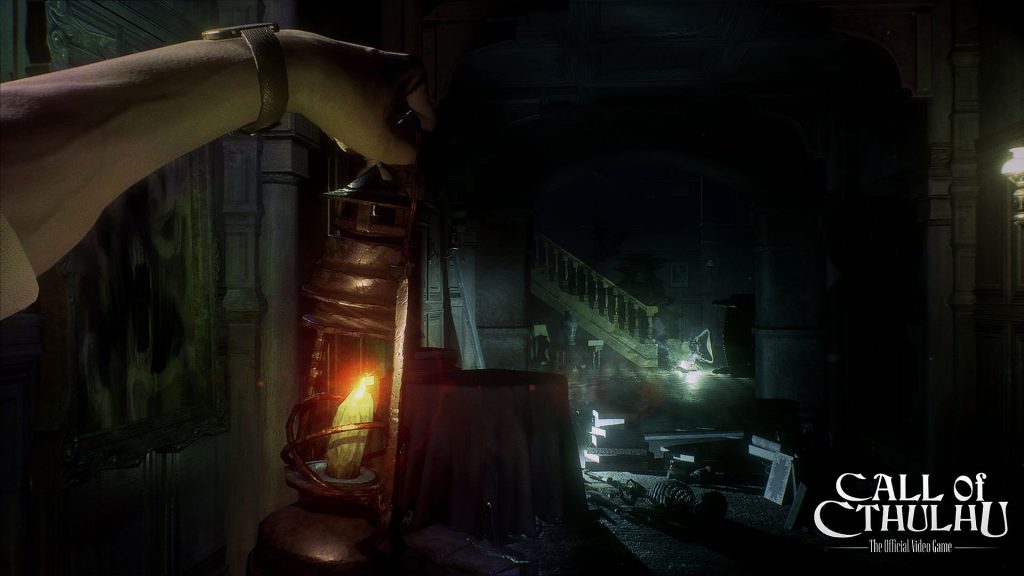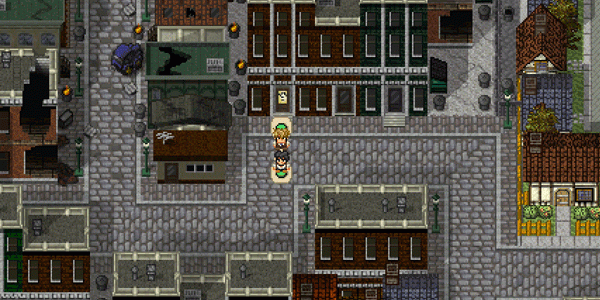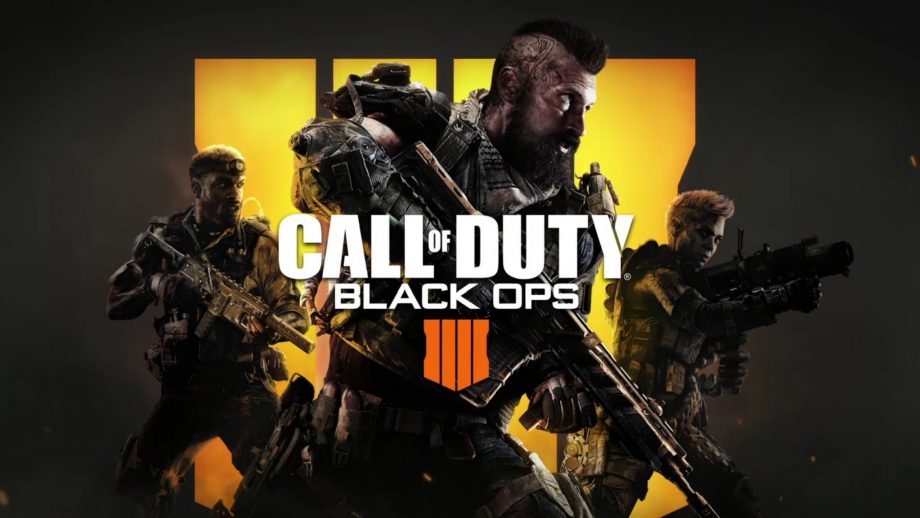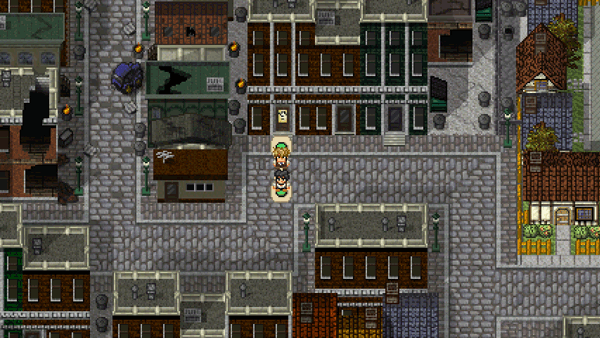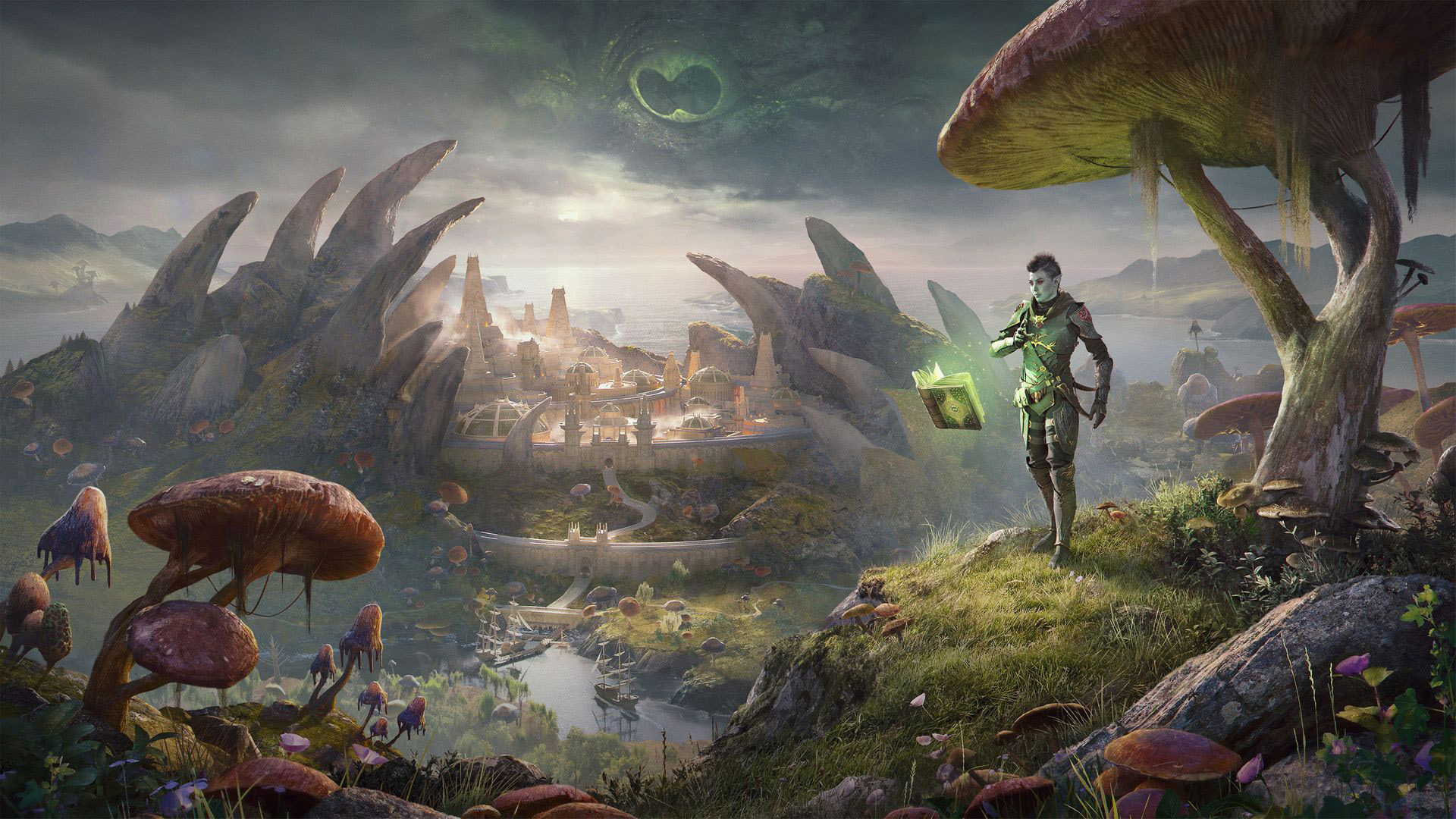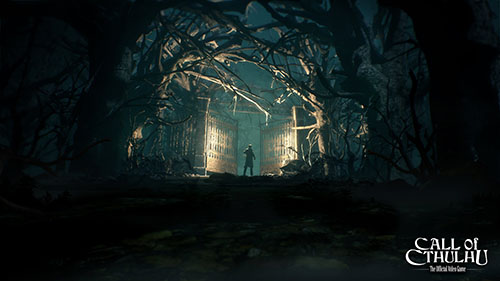
There’s been plenty of games based on H.P. Lovecraft’s horror mythos, filled with ancient terrifying cosmic gods and unknowable terrors that send common folks mad from simply looking at them. Of course, among all this the octopus-god Cthulhu has been memed into oblivion by pop culture, but there’s been some genuinely good horror titles to come out of it, like 2005’s Call of Cthulhu: Dark Corners of the Earth. Now, Focus Interactive and Cyanide are bringing us Call of Cthulhu: The Official Video Game based on the mechanics of the pen-and-paper RPG of the same name, but with an original plot based on the mythology. At Gamescom I played the first two hours (or first four chapters) of the game, and it’s fascinating how Cyanide have been able to make a compelling RPG with little or no combat.
Call of Cthulhu: The Official Video Game is set in 1924, putting you in the shoes of Edward Pierce, a hard-drinking alcoholic private investigator in need of a case, lest he get kicked out of his detective agency. After dreaming about a dark dungeon covered in viscera and rotting sea animals and home to a strange cult’s ceremony, he awakens to a call from head office. Here, you can assign Character Points to boost Edward’s various attributes. You can level up Psychology (Edward’s understanding of human behaviour), Occultism (understanding of myths and occult artefacts), Spot Hidden (ability to find hidden objects), Medicine (ability to analyse wounds and make a medical diagnosis), Investigation (general investigative prowess), Eloquence (ability to influence others through speech) and Strength (Edward’s physical power, and his chance of forcing locks open).
In the two hours I played, and potentially the entire game, I encountered no combat, meaning that Edward’s attributes only affect his chance of success in various areas of his investigation. Some dialogue options will fail if Edward’s Eloquence isn’t high enough, or if his Spot Hidden ability is too low for him to catch on to clues. His Occultism ability will allow him to extract more information about otherwise incomprehensible graffiti or sights. Therefore, you aren’t so much levelling up his abilities to come out of combat situations effectively, but instead to provide better options for getting through the game’s puzzles.
Edward is visited by Stephen Webster, a wealthy industrialist who requests an investigation into his deceased daughter, a famous painter who was known for her dark, disturbing artwork. Her whole family burned to death in a fire on (the rather on-the-nose) Darkwater Island months ago, but Webster believes there’s more to the story than has been found by police, and a painting left behind by his daughter may hold a meaning to the truth of what happened. In desperate need of the work, Edward accepts the case and travels to Darkwater.
The first major challenge posed by Call of Cthulhu is getting access to a warehouse of interest in Darkwater’s port, which is closed to outsiders and guarded by both police and shifty bootleggers evading prohibition. The methods you can take to get inside seem to be pretty varied – in my playthrough I was able to sneak around unnoticed to overhear a conversation between the bootleggers about their shared fear of their boss, Cat, and then use that information to bluff my way inside by claiming I’d been sent by her. However, sneaking a glance at my neighbour’s playthrough showed he came up with a completely different tactic, that involved finding more notes and information and actually meeting Cat herself in a one-on-one meeting.
From there, Edward advances to the Hawkins’ mansion on Darkwater, which has been left abandoned since the fire. Here, some more disturbing aspects of the case seem to come to light, which Edward is able to piece together with a ‘reconstruction’ feature. This basically confines you to a small area, while you find clues to create ghostly holograms in Edward’s imagination of what took place. Arguments between family members over eating a mystery ‘meat’, as well as the strange behaviour of the patriarch of the family, Charles Hawkins, seem to indicate there’s more going on.
Solving a puzzle in the mansion’s study reveals a network of tunnels beneath, with strange palaeolithic paintings depicting giant creatures and sacrifices. Eventually, Edward comes across a painting of himself, apparently painted by Webster’s daughter, before being attacked by a masked cult figure. Landing into a pit very similar to the one from his dream, Edward enters a state of ‘panic’, apparently part of the game’s sanity system, which obscures the screen and makes it more difficult to find a way to escape in the dark. Speaking of the dark, Edward’s only equipment to combat this are a lantern which runs on oil that can run out, and a lighter which barely does anything in terms of usefully lighting the area. However, he can also collect items such as keys or boltcutters that are used contextually to get past certain obstacles. In the pause screen, you can see Edward’s inventory at any time, along with any documents or clues collected and profiles on the game’s characters. To reveal what happens next might be spoiling too much, but it’s of course expected that a mysterious cult worshipping an ancient deity is involved, leading to a frantic escape from the caves as it begins to collapse.
Call of Cthulhu plays more like an adventure game than it does any other traditional horror game, although I do also appreciate there seem to be a few references to one of the other great Lovecraft-inspired games, Alone in the Dark. From the key artwork of the protagonist armed with a lantern, to a couple of the camera angles in cutscenes and even the protagonist’s name ‘Edward’, it seems like the developers are paying homage to their horror heritage.
Call of Cthulhu is getting close to its release worldwide on 30 October on PC, PS4 and Xbox One, when I’ll be curious to see what comes next for Edward Pierce, and just how the game’s various attribute systems will change up the larger story.

